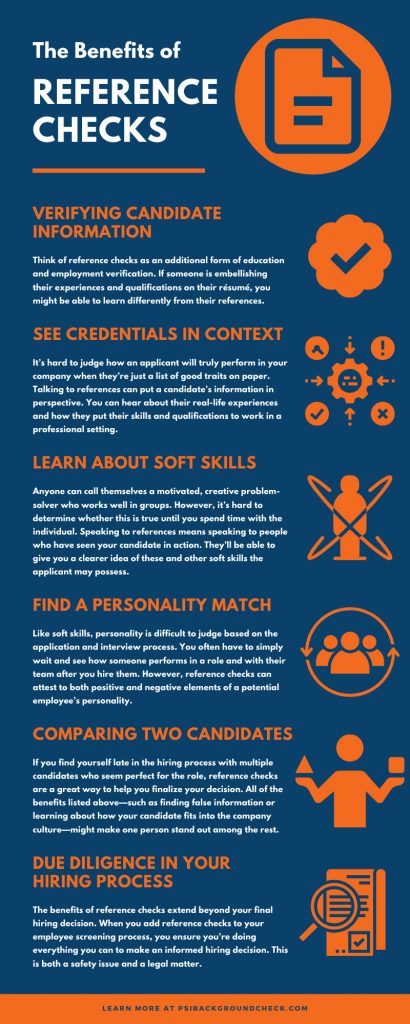Process of Hiring LatAm Devs in 2024
Table of Contents
The world is constantly changing and technology and innovation are not going to stop evolving, thus the demand for skilled developers is soaring, prompting companies to cast their nets wider in search of talent. Latin America (LatAm) has emerged as a key destination for sourcing developers, boasting a rich pool of skilled professionals. Today’s article explores the evolving landscape of hiring LatAm developers in 2024, delving into the intricacies of recruitment processes and their significance in the contemporary business environment.

The increasing demand for LatAm developers reflects the region’s burgeoning tech ecosystem, competitive skill sets, and cost-effectiveness. Companies spanning various industries are turning their attention to LatAm, recognizing the value these developers bring in driving innovation and competitiveness on a global scale.
How Do We Get Started?
Understanding the nuances of hiring LatAm developers in 2024 is crucial for companies striving to thrive in the competitive tech landscape. With the rising trend of remote and distributed teams, gaining insights into effective hiring processes enables organizations to tap into LatAm’s vast talent pool efficiently. Moreover, staying abreast of the latest trends and practices in recruitment empowers businesses to make informed decisions aligned with their strategic objectives.
Throughout this article, we will explore a range of topics pertinent to hiring LatAm developers in 2024. These include talent sourcing strategies tailored to the LatAm market, cultural considerations essential for fostering strong working relationships, remote hiring best practices, and navigating legal and administrative hurdles associated with hiring remote talent. Additionally, we will discuss strategies for building sustainable remote teams, focusing on retention and team dynamics.
By examining these aspects of the hiring process, companies can gain valuable insights into optimizing their recruitment efforts for LatAm developers. Ultimately, this facilitates the creation of cohesive, high-performing remote teams capable of driving innovation and success in today’s interconnected digital landscape.
Overview of the LatAm Tech Industry
The Latin American tech industry has experienced exponential growth in recent years, driven by a combination of factors including a sizable tech-savvy population, advancements in technology, and significant investments. Governments across LATAM have been proactive in fostering tech advancement, leading to the proliferation of regional tech hubs in cities such as Mexico City, Cordoba, and Belo Horizonte. CloudDevs has an article about the reasons why you should consider hiring Latam Developers.
Growth and Potential of the LatAm Tech Sector
Latin America’s tech hubs boast extensive experience in software development, catering to a wide array of industries including blockchain, artificial intelligence (AI), and machine learning (ML). This abundance of tech talent has made it easier and more cost-effective for startups and companies worldwide to tap into the region’s expertise.
With more than 2 million talented software developers in Latin America, the region is swiftly emerging as a global tech talent powerhouse. Countries like Canada and the US are increasingly turning to LATAM developers to fulfill their tech needs, drawn by the region’s potential for continuous innovation and cost-effectiveness.
Statistics and Insights on the Tech Talent Pool
Looking at statistics and checking into highlights of the tech talent pool of Latin America would make the process of hiring LatAm developers a lot easier to you. Colombia has particularly stood out as a preferred outsourcing destination, ranking third in Latin America based on the size of its IT market. The country’s tech industry is experiencing robust growth, with cities like Cali, Medellin, and Bogota serving as hubs for emerging startups. Initiatives by the Colombian government to support these startups through funding and incentives further contribute to their growth. CloudDevs offers a complete guide to hiring Latam Developers here.
Brazil, boasting the largest tech hub in Latin America, focuses on sectors such as e-commerce, fintech, and software development. The government has implemented various initiatives to bolster the IT industry, resulting in projected growth of 5% and reaching $8 billion by 2023.
Mexico, ranking 12th globally in the Tech market based on innovation, has a significant focus on fintech, e-commerce, and development industries. With over 700,000 software developers and 3 million professionals in STEM fields, Mexico’s tech sector continues to attract investments and initiatives aimed at technological advancement.
Argentina, renowned for its emphasis on biotechnology, software, and nanotechnology, ranks 9th in the Global Innovation Index. The country’s focus on STEM education and English proficiency among its 115,000 software developers makes it an attractive destination for tech talent recruitment in South America.
Costa Rica, boasting a tech and infrastructure-friendly environment, ranks 3rd in the Global Innovation Index in the LATAM region. With significant investments from both the government and the private sector, Costa Rica’s tech industry is thriving, supported by its high levels of STEM education and a substantial pool of software developers.
Understanding Laws and Regulations
When venturing into hiring LatAm developers, it’s imperative to grasp the intricate legal landscape governing employment relationships and intellectual property rights.
Why is Legal Compliance Important?
Establishing clear employment contracts and agreements lays the foundation for a mutually beneficial working relationship. These documents should meticulously outline crucial aspects such as job roles, compensation structures, working hours, benefits, and termination procedures. Adhering to labor laws specific to each LATAM country is paramount, encompassing regulations regarding maximum working hours, overtime compensation, and mandated minimum wages. Failing to comply with these laws can lead to legal repercussions and tarnish a company’s reputation.
LatAm Labor Laws
Navigating the diverse labor laws across LATAM countries requires diligent research and understanding. Each nation has its own set of regulations governing employment practices, ranging from labor rights to union involvement. By conducting thorough comparisons of labor laws prevalent in target countries, businesses can tailor their hiring strategies and operational workflows accordingly. Seeking guidance from legal experts well-versed in regional labor laws can provide invaluable insights and ensure compliance with local regulations.
Intellectual Property Protection
Safeguarding intellectual property (IP) rights is essential to protect proprietary information and innovations developed during the course of employment. Employment contracts should include robust clauses delineating ownership rights, ensuring that any creations or inventions belong to the employing company. Non-disclosure agreements (NDAs) serve as additional safeguards, preventing employees from divulging sensitive information or intellectual assets to third parties. By establishing clear guidelines surrounding IP rights and confidentiality, companies can mitigate the risk of disputes and unauthorized disclosures.
Addressing Recent Legal Updates
Staying abreast of recent legal developments and updates is crucial to ensure ongoing compliance with evolving regulations. Particularly in the realm of data protection, companies must adhere to stringent laws such as the General Data Protection Regulation (GDPR) and implement robust measures to safeguard sensitive information. Understanding the cybersecurity landscape, including prevalent threats and emerging trends, is vital for fortifying defenses against cyberattacks and data breaches. Regular audits and assessments can help companies identify areas for improvement and ensure adherence to regulatory requirements.
By prioritizing legal compliance and implementing proactive measures for IP protection and data security, businesses can cultivate fruitful partnerships with LatAm developers while mitigating legal risks and upholding ethical standards. Embracing a proactive approach to legal compliance not only fosters trust and transparency but also strengthens the foundation for long-term success in the global marketplace.
How to Define Your Hiring Needs?
Effectively hiring LatAm developers requires a structured approach beginning with clearly defining your hiring needs. This involves outlining the specific skills, experience level, and project requirements necessary for success. By establishing clear criteria upfront, you can streamline the recruitment process, attract suitable candidates, and ultimately build a strong development team tailored to your project goals. Thus, it is necessary to determine the important steps of hiring a LatAm developer.
Step 01: Assessing Project Requirements and Skillset Needs
Before embarking on the hiring process, it’s crucial to assess your project requirements thoroughly. Determine the specific skill sets and expertise needed to fulfill the objectives of your project. This involves identifying both hard skills, such as programming languages and technical competencies, and soft skills, such as communication and teamwork abilities. By understanding your project’s unique demands, you can narrow down the criteria for potential candidates.
Step 02: Determining the Type of Developer Needed
Different projects require different types of developers, whether it be front-end, back-end, full-stack, or specialized roles in areas like AI or blockchain. Evaluate the nature of your project and determine the type of developer best suited to fulfill its requirements. Consider factors such as the technologies involved, the scope of work, and the desired outcomes to ascertain the most appropriate developer profile for your needs.
Step 03: Identifying Specific Technical Skills and Experience Required
Once you have determined the type of developer needed, identify the specific technical skills and experience required for the role. Create a comprehensive list of technical competencies, tools, and technologies relevant to your project. Additionally, consider any industry-specific knowledge or domain expertise that may be necessary for success. By clearly defining these requirements, you can effectively communicate expectations to potential candidates and streamline the hiring process.
Following these steps allows you to establish a solid foundation for your hiring process, enabling you to attract and select candidates who possess the skills and expertise needed to drive your project forward. By defining your hiring needs upfront, you set the stage for a successful recruitment effort and ensure alignment between candidate capabilities and project requirements.
What Should You Do When Sourcing LatAm Developers?
To successfully hire LatAm developers, businesses can leverage a variety of strategies and platforms to find the right talent. Here are some effective methods:
Online Job Platforms and Talent Marketplaces
Online job platforms and talent marketplaces provide a convenient way to connect with LatAm developers. It’s worth checking out the top platforms for hiring options from Latin America. Platforms like ACL, Terminal.io, and Talently.Tech offers access to a diverse pool of skilled professionals from Latin America. These platforms streamline the hiring process by providing tools for posting job listings, reviewing candidate profiles, and facilitating communication between employers and developers.
Local Tech Communities, Events, and Meetups
Engaging with local tech communities, events, and meetups in Latin America can help businesses establish connections with developers in the region. Organizations like WeHaveDevs and Talent Soy Henry provide opportunities for networking and collaboration, allowing employers to meet talented developers and build relationships within the tech community.
Social Media and Professional Networks
In addition to online job platforms and talent marketplaces, leveraging social media and professional networks can significantly enhance your ability to source top-tier LatAm developers. Social media platforms like LinkedIn, Twitter, and Facebook offer invaluable resources for connecting with tech professionals in Latin America. By strategically utilizing these platforms, you can expand your reach, engage with potential candidates, and build relationships within the LatAm tech community.
LinkedIn, in particular, stands out as a powerful tool for recruiting LatAm developers. With its extensive network of professionals, including many from Latin America, LinkedIn allows you to search for candidates based on specific criteria such as location, skills, and experience. Joining industry-specific groups and communities on LinkedIn can also provide access to a pool of talented developers who may not be actively looking for new opportunities but are open to hearing about them.

Similarly, Twitter and Facebook can be valuable resources for engaging with the LatAm tech community. By following relevant hashtags, participating in industry chats, and sharing job postings, you can increase visibility and attract the attention of potential candidates. Additionally, many developers maintain active profiles on these platforms, making it easier to connect with them directly.
Professional networks, both online and offline, also play a crucial role in sourcing LatAm developers. Participating in tech events, conferences, and meetups in Latin America allows you to network with developers in person and gain insights into the local tech scene. Building relationships with professionals in the LatAm tech community can lead to valuable referrals and recommendations, helping you identify top talent for your projects.
By leveraging social media platforms and professional networks, you can tap into the rich pool of talent in Latin America and find skilled developers who are the right fit for your team and projects.
Recruitment Agencies and Outsourcing Companies
Partnering with recruitment agencies and outsourcing companies specializing in Latin America can streamline the process of sourcing and hiring LatAm developers. These agencies and firms have expertise in identifying and vetting top talent in the region, saving you time and resources in your search for qualified candidates.
Recruitment agencies specializing in Latin America often have extensive networks and connections within the local tech community. They maintain databases of pre-screened candidates and can quickly identify individuals with the skills and experience you require for your projects. By leveraging their expertise, you can gain access to a broader pool of talent and increase the likelihood of finding the right developers for your team.
Outsourcing companies with a presence in Latin America offer another avenue for sourcing developers in the region. These companies typically have established teams of developers with diverse skill sets and experience levels, allowing you to quickly scale up your development capacity as needed. Additionally, they handle administrative tasks such as payroll, HR, and project management, simplifying the process of working with remote teams in Latin America.
When partnering with recruitment agencies and outsourcing companies, it’s essential to choose reputable firms with a track record of success in the region. Look for agencies and companies that specialize in tech recruitment and have a deep understanding of the local market dynamics. By collaborating with trusted partners, you can expedite the hiring process and ensure that you’re engaging with top talent in Latin America. You can read CloudDev’s list of top platforms to hire LatAm developers here.
By leveraging these sourcing strategies and platforms, businesses can effectively connect with LatAm developers and build high-performing teams to drive their projects forward. Whether through online platforms, local communities, social media, or recruitment agencies, there are numerous avenues for finding top talent in Latin America and tapping into the region’s vibrant tech ecosystem.
Screening and Evaluating Candidates
Reviewing resumes and portfolios is the initial step in screening and evaluating candidates for a developer position, as per A step-by-step guide to hiring software developers from Latin America, which is a blog by Devengine.ca on Linkedin. Candidates from Latin America may come from diverse educational and professional backgrounds, ranging from formal university degrees to coding academies and boot camps. It’s essential to understand the landscape of educational institutions and companies in the region known for producing top tech talent.
When reviewing resumes, look for candidates who have relevant experience and skills that align with your project requirements. Pay attention to their work history, including any freelance projects, work for outsourcing firms, or contributions to SMBs. Evaluate the technologies and programming languages they have experience with, as well as any certifications or awards they may have received.
Portfolios provide valuable insights into a candidate’s past projects and coding abilities. Look for candidates who have a diverse portfolio showcasing a range of projects, including web applications, mobile apps, or software solutions. Assess the quality of their work, the complexity of the projects, and their ability to solve real-world problems through code.
Conducting Technical Assessments and Coding Challenges
Technical assessments and coding challenges are essential components of evaluating a candidate’s technical skills and proficiency. These assessments can help you gauge a candidate’s problem-solving abilities, coding proficiency, and familiarity with relevant technologies and frameworks.
Consider using coding tests or scheduling live coding interviews to assess candidates’ coding abilities. Provide candidates with real-world coding challenges or scenarios relevant to your project requirements. Evaluate their coding solutions for efficiency, readability, and adherence to best practices.
Additionally, consider incorporating technical assessments specific to the technologies and programming languages used in your project. This can include assessing candidates’ knowledge of frameworks, libraries, and tools commonly used in software development.
Remote Interviews and Evaluating Cultural Fit
Remote interviews play a crucial role in evaluating candidates’ technical abilities, communication skills, and cultural fit for your team. Conduct video interviews with candidates to assess their communication skills, professionalism, and ability to work effectively in a remote environment.
During the interview, ask candidates about their past experiences, problem-solving approaches, and contributions to previous projects. Evaluate their responses for clarity, creativity, and alignment with your project requirements.
Assess candidates’ cultural fit by discussing your team’s values, work culture, and collaboration expectations. Consider how well candidates align with your team’s communication style, work ethic, and approach to problem-solving. Look for candidates who demonstrate flexibility, adaptability, and a willingness to collaborate with diverse teams.
Checking References and Past Project Experience
Checking references and past project experience provides valuable insights into a candidate’s professional background and performance. Reach out to previous employers, colleagues, or clients to gather feedback on the candidate’s work ethic, technical abilities, and interpersonal skills.
Ask references about the candidate’s contributions to past projects, their ability to meet deadlines, and their communication style. Inquire about any challenges the candidate may have faced and how they handled them. Use this information to assess the candidate’s suitability for your project and team.

Additionally, ask candidates to discuss their past project experience during the interview process. Evaluate their role in previous projects, the challenges they encountered, and the outcomes they achieved. Look for candidates who demonstrate initiative, problem-solving skills, and a track record of delivering high-quality work.
Negotiating and Making an Offer
Negotiating and making an offer involves several key steps to ensure a successful hiring process. Firstly, determining competitive compensation packages is crucial, considering factors like the candidate’s experience, skills, and market rates. Secondly, it’s essential to consider local salary benchmarks and the cost of living to offer a fair and attractive salary. This ensures that the compensation package aligns with industry standards and meets the candidate’s financial needs. You can read more about the costs of hiring LatAm developers by CloudDevs here.
Next, negotiating terms and conditions of employment involves discussing aspects such as benefits, work schedules, remote work options, and career advancement opportunities. This step allows both parties to address any concerns and reach mutually beneficial agreements. Finally, making the final offer involves presenting a formal proposal that includes compensation details, benefits, and other relevant terms. Additionally, addressing any legal paperwork, such as employment contracts or non-disclosure agreements, ensures compliance with legal requirements and protects both parties’ interests. By following these steps, employers can effectively negotiate and make offers that attract top talent while meeting organizational needs.
Onboarding and Integration Stages
Onboarding and integrating new hires, particularly remote developers, is crucial for ensuring their success and seamless integration into the team and company culture. Firstly, planning the onboarding process for remote developers involves creating a comprehensive plan that outlines the steps, resources, and timelines for their integration. This plan should include orientation sessions, training materials, and introductions to key team members and company policies.
Secondly, setting up communication channels and project management tools is essential for remote developers to collaborate effectively with their team members. Utilizing platforms like Slack, Microsoft Teams, or Zoom for communication and tools like Jira or Trello for project management ensures clear communication and efficient workflow.
Lastly, integrating new hires into the existing team and company culture involves fostering a sense of belonging and camaraderie. This can be achieved through virtual team-building activities, regular check-ins with team members and mentors, and promoting open communication and collaboration. Additionally, providing opportunities for remote developers to contribute their ideas and perspectives helps them feel valued and invested in the company’s success. By prioritizing these steps, organizations can facilitate a smooth onboarding and integration process for remote developers, leading to increased productivity and job satisfaction.
Conclusion
In conclusion, this article has provided valuable insights into the hiring process in 2024, underscoring the necessity for organizations to remain proactive and adaptable in their recruitment strategies. We explored a range of essential software development tools, including Embold for code analysis, Netbeans for cross-platform development, Bootstrap for web development, Azure for cloud computing, and Dataiku DSS for data science. By incorporating these tools into their workflows, organizations can streamline development processes, enhance productivity, and deliver high-quality software solutions efficiently.
Moreover, we discussed the importance of understanding the evolving landscape of hiring, which encompasses rapid technological advancements, shifting market dynamics, and evolving candidate preferences. Employers must stay informed about industry trends, leverage innovative tools and strategies, and prioritize candidate experience to attract and retain top talent effectively. As remote work continues to globalize, organizations can tap into this talent pool to meet their workforce needs and foster a thriving, diverse team.
CloudDevs is your one-stop talent pool when looking to hire LatAm developers. Not just that, they bring you numerous other resources and benefits that would make your hiring process less stressful and complicated.
To wrap up, by embracing the latest trends in hiring, understanding market demands, and embracing diversity in talent sourcing, organizations can position themselves for success in 2024 and beyond. It’s imperative for employers to adapt their hiring strategies to remain competitive and cultivate a dynamic workforce capable of navigating the complexities of an ever-evolving industry landscape.



